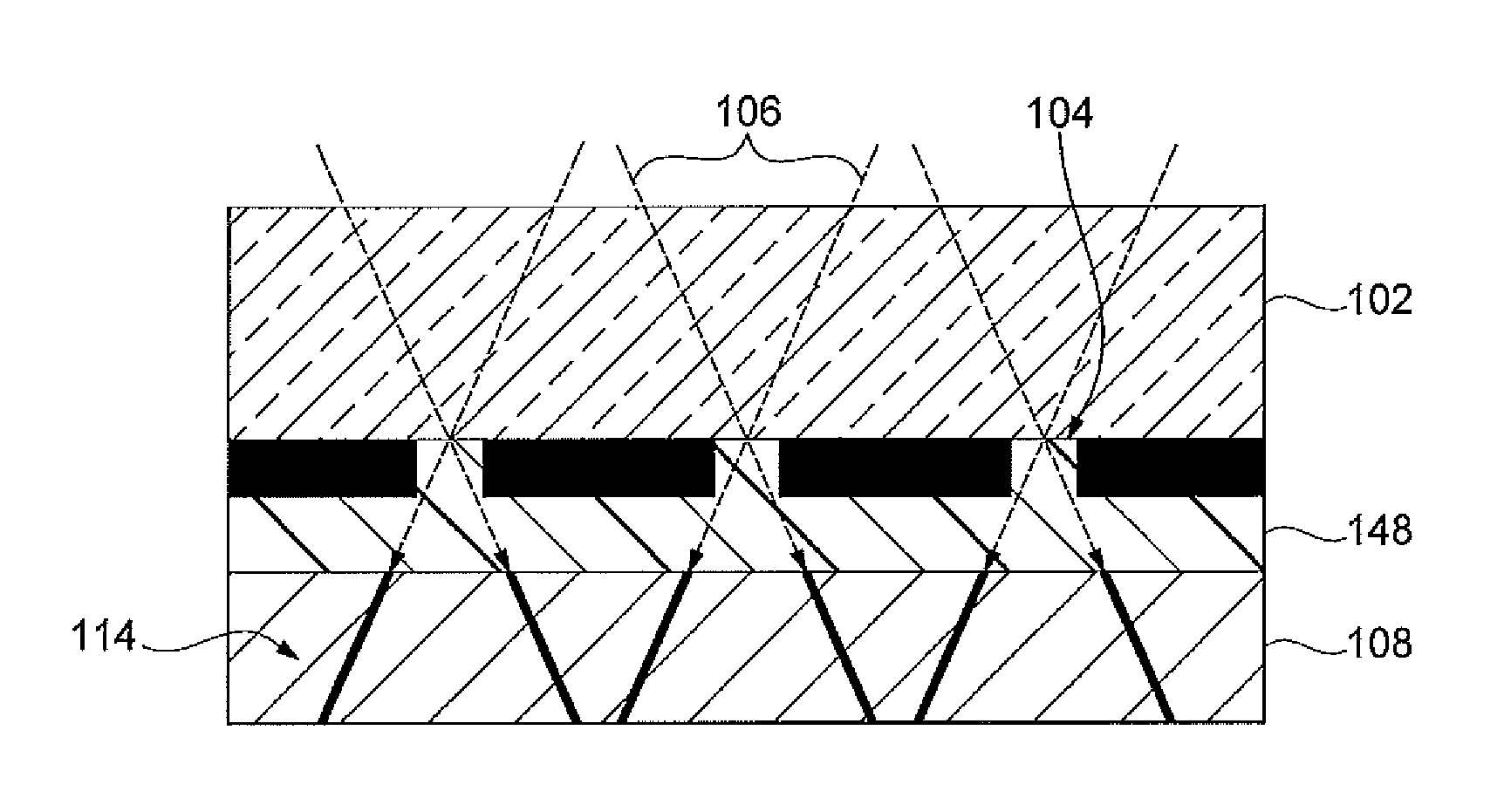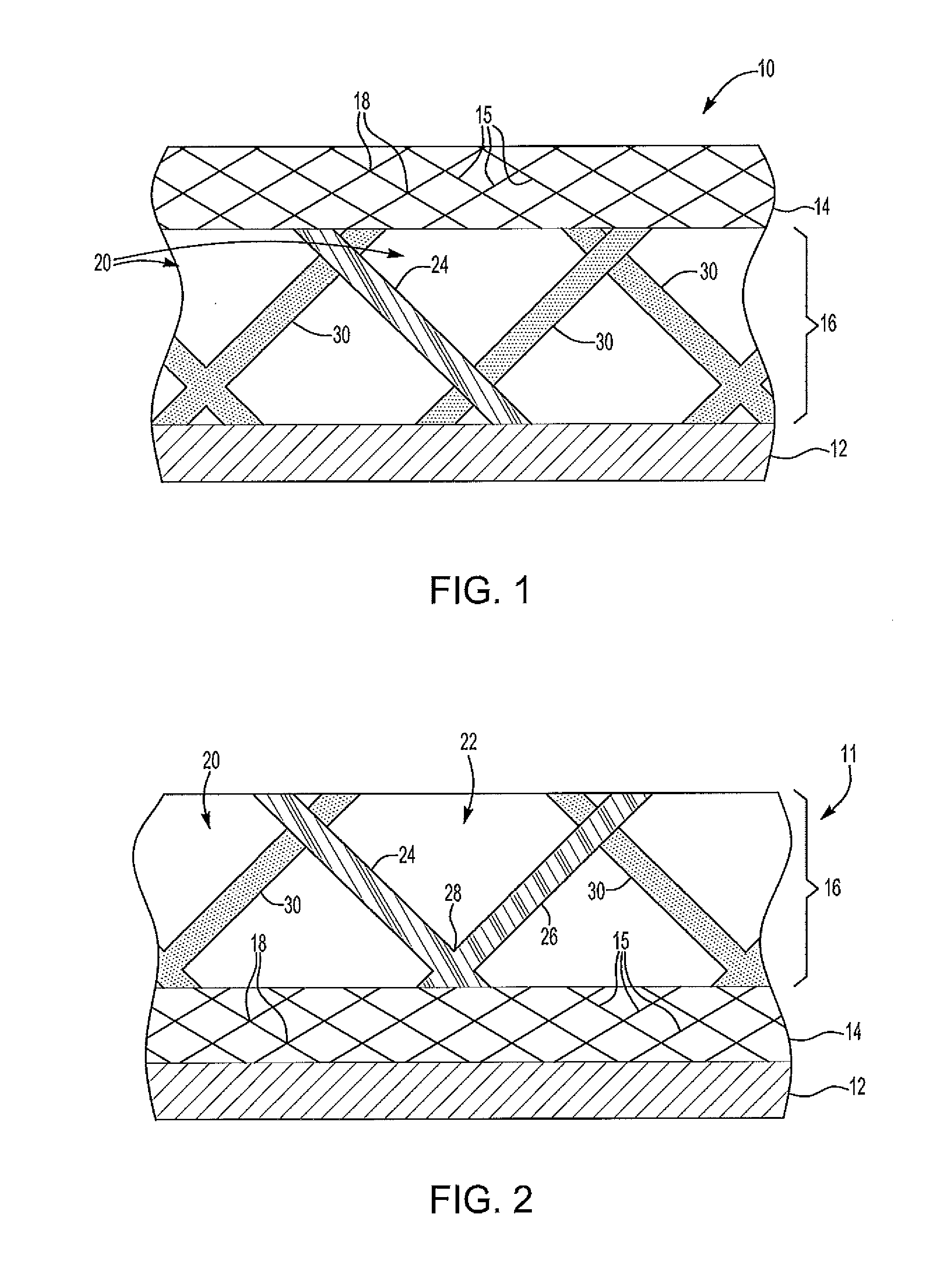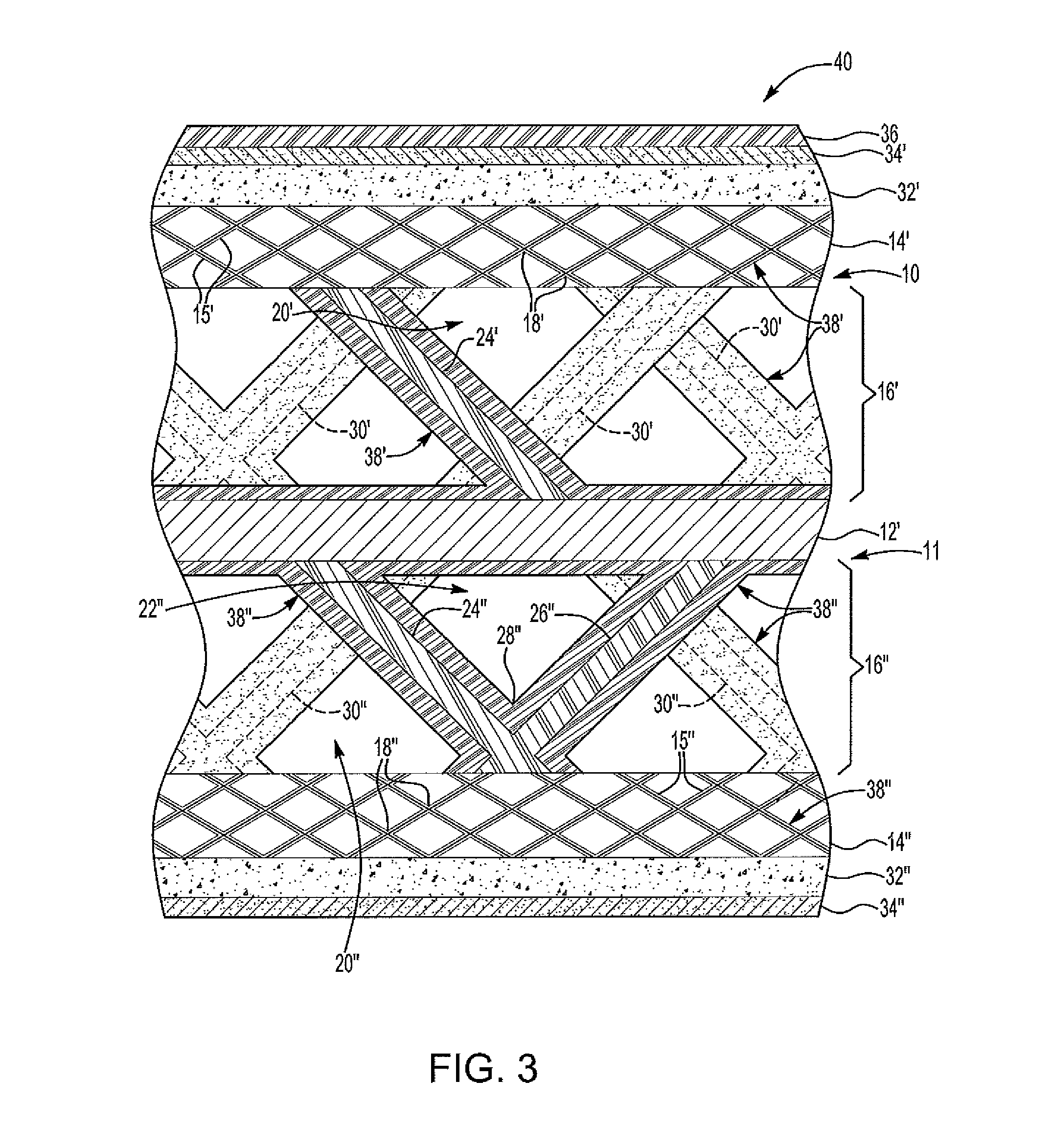Fuel cell fabrication using photopolymer based processes
- Summary
- Abstract
- Description
- Claims
- Application Information
AI Technical Summary
Benefits of technology
Problems solved by technology
Method used
Image
Examples
Embodiment Construction
[0026]The following detailed description and appended drawings describe and illustrate various embodiments of the invention. The description and drawings serve to enable one skilled in the art to make and use the invention, and are not intended to limit the scope of the invention in any manner. In respect of the methods disclosed, the steps presented are exemplary in nature, and thus, are not necessary or critical.
[0027]As shown in FIGS. 1 and 2, a photopolymer based process to fabricate one of a first fuel cell component 10 and a second fuel cell component 11 is provided. The fuel cell components 10, 11 include a substrate 12, at least one diffusion medium layer 14 having a micro-truss structure 15, and at least one flow field layer 16. In FIG. 1, the first fuel cell component 10 is shown with the flow field layer 16 disposed between the substrate 12 and the diffusion medium layer 14. In FIG. 2, the second fuel cell component 11 is shown with the diffusion medium layer 14 disposed ...
PUM
| Property | Measurement | Unit |
|---|---|---|
| Electrical conductivity | aaaaa | aaaaa |
| Flow rate | aaaaa | aaaaa |
| Adhesion strength | aaaaa | aaaaa |
Abstract
Description
Claims
Application Information
 Login to View More
Login to View More - R&D
- Intellectual Property
- Life Sciences
- Materials
- Tech Scout
- Unparalleled Data Quality
- Higher Quality Content
- 60% Fewer Hallucinations
Browse by: Latest US Patents, China's latest patents, Technical Efficacy Thesaurus, Application Domain, Technology Topic, Popular Technical Reports.
© 2025 PatSnap. All rights reserved.Legal|Privacy policy|Modern Slavery Act Transparency Statement|Sitemap|About US| Contact US: help@patsnap.com



